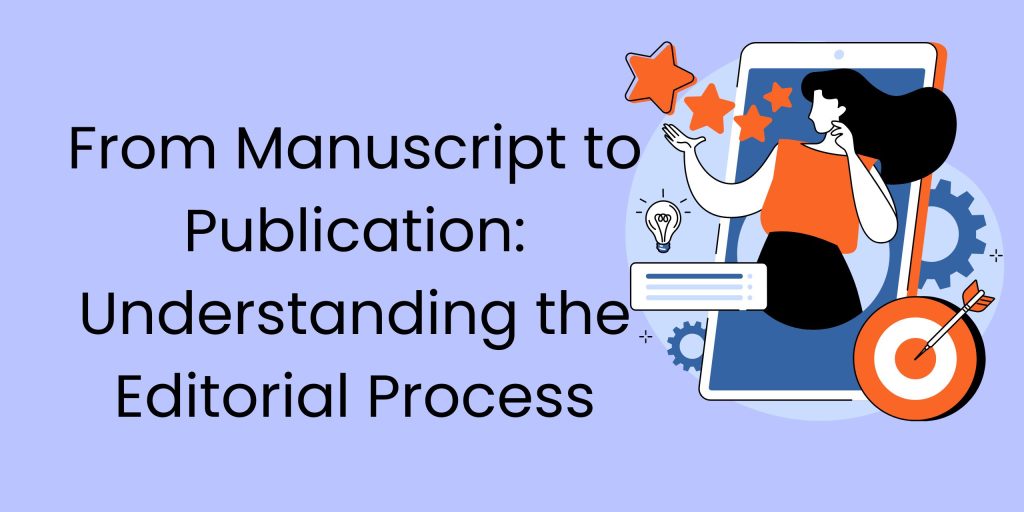Introduction:
The journey from manuscript submission to publication in an academic journal is a complex and often opaque process that can be daunting for students and early-career researchers. Understanding the editorial process is crucial for navigating the academic publishing landscape effectively and increasing the chances of successful publication. In this comprehensive guide, we’ll take a deep dive into the editorial process, demystifying each stage from manuscript submission to publication. By gaining insights into the inner workings of academic publishing, students can better prepare themselves for the journey ahead and maximize their chances of publication success.
- Submission:
The editorial process begins with the submission of a manuscript to an academic journal. Authors typically submit their manuscripts electronically through the journal’s online submission system. It’s essential to ensure that the manuscript adheres to the journal’s submission guidelines, including formatting requirements, word limits, citation style, and authorship criteria. Authors may also be required to provide a cover letter, conflict of interest statement, and details of any related work or prior submissions. - Editorial Assessment:
Upon submission, the manuscript undergoes an initial editorial assessment by the journal’s editor or editorial team. The editor evaluates the manuscript’s suitability for the journal based on factors such as relevance to the journal’s scope, originality of the research, significance of the findings, and adherence to ethical and methodological standards. Manuscripts that pass the initial assessment are assigned to an associate editor or handling editor for further review. - Peer Review:
The next stage in the editorial process is peer review, where the manuscript is evaluated by independent experts in the field, known as peer reviewers. Peer review aims to assess the quality, validity, and originality of the research, as well as provide constructive feedback to the authors. Reviewers evaluate various aspects of the manuscript, including its methodology, results, interpretation, clarity, and significance. The peer review process may involve multiple rounds of revisions and resubmissions based on reviewer feedback. - Decision Making:
Following peer review, the handling editor makes a decision on the manuscript, taking into account the reviewers’ comments, recommendations, and overall assessment. Common editorial decisions include accept, revise and resubmit, minor revisions, major revisions, or reject. Manuscripts that are accepted may proceed to the production stage, while those requiring revisions undergo further rounds of review and revision. - Revision and Resubmission:
If the manuscript is recommended for revision, authors are typically asked to address the reviewers’ comments and make necessary revisions to improve the quality and clarity of the manuscript. Authors should carefully respond to each reviewer comment, providing detailed explanations or clarifications and indicating the changes made in the revised manuscript. The revised manuscript is then resubmitted to the journal for reevaluation by the handling editor and reviewers. - Acceptance and Production:
Once the revised manuscript meets the journal’s standards and satisfies the reviewers’ concerns, it is accepted for publication. The accepted manuscript undergoes copyediting, typesetting, and proofreading by the journal’s production team to ensure consistency, accuracy, and adherence to the journal’s style and formatting guidelines. Authors may be asked to review and approve the final version of the manuscript before it is published online or in print. - Publication:
Finally, the manuscript is published in the journal and made available to the academic community. Depending on the journal’s publication schedule, the manuscript may appear online as an advance publication or in a future issue of the journal. Published manuscripts are assigned a digital object identifier (DOI) and indexed in academic databases, making them accessible and discoverable to researchers worldwide.
Key Tips for Authors:
- Choose the Right Journal: Select a journal that aligns with the scope, audience, and impact factor of your research. Consider factors such as the journal’s reputation, readership, and publication frequency when deciding where to submit your manuscript.
- Follow Submission Guidelines: Carefully read and adhere to the journal’s submission guidelines, including formatting requirements, word limits, citation style, and authorship criteria. Failure to comply with submission guidelines may result in desk rejection or delays in the editorial process.
- Respond to Reviewer Comments: Take reviewer comments seriously and address them thoughtfully in your manuscript revisions. Be open to constructive criticism and feedback, and revise your manuscript accordingly to improve its quality and impact.
- Communicate with the Editor: Maintain open and professional communication with the journal’s editor or editorial team throughout the submission and review process. Seek clarification or guidance if you have any questions or concerns about the editorial process or reviewer comments.
- Be Patient and Persistent: The editorial process can be time-consuming and unpredictable, with multiple rounds of revisions and resubmissions. Be patient and persistent, and don’t be discouraged by rejection or revision requests. Use feedback from peer reviewers to strengthen your manuscript and increase its chances of acceptance.
Conclusion:
Navigating the editorial process from manuscript submission to publication requires careful planning, attention to detail, and perseverance. By understanding the stages of the editorial process, following submission guidelines, responding to reviewer comments, and maintaining open communication with editors, authors can increase their chances of publication success. Remember that the editorial process is a collaborative endeavor between authors, editors, and reviewers, aimed at ensuring the quality, integrity, and impact of scholarly research. With patience, resilience, and a commitment to excellence, authors can successfully navigate the journey from manuscript to publication and contribute to the advancement of knowledge in their respective fields.
